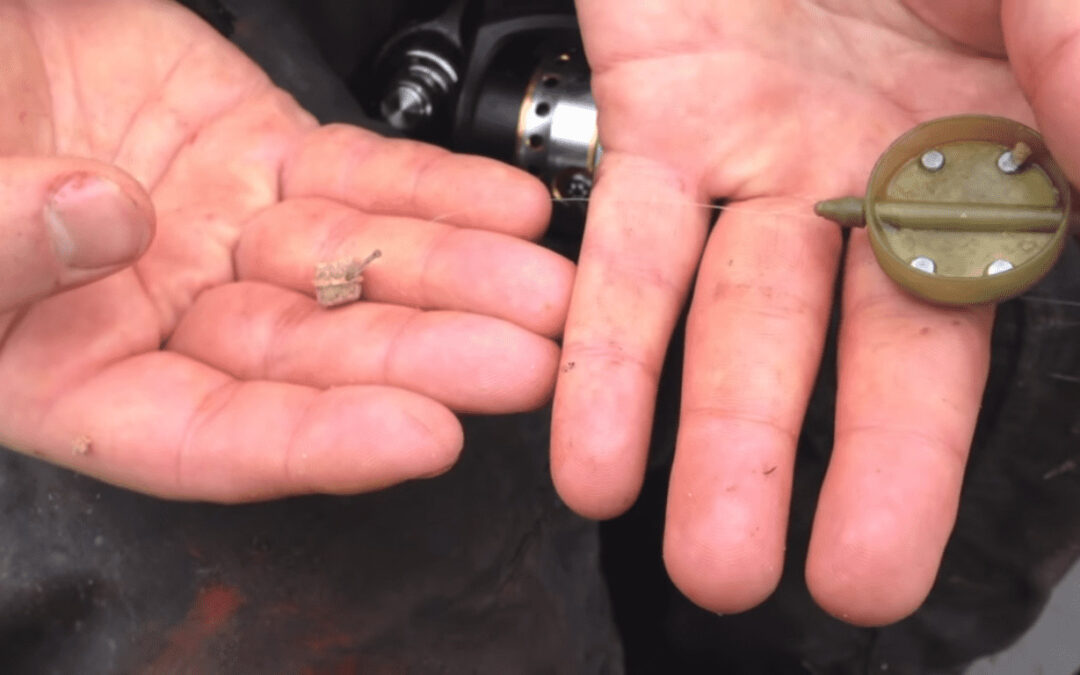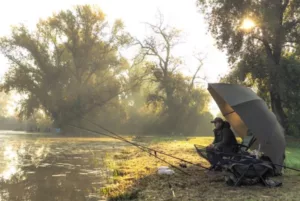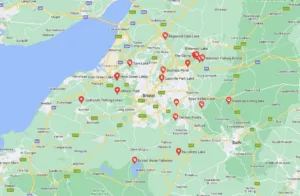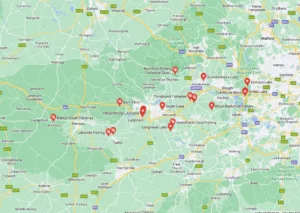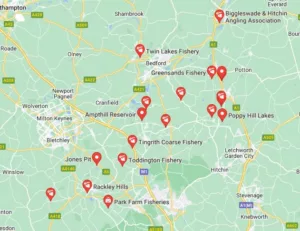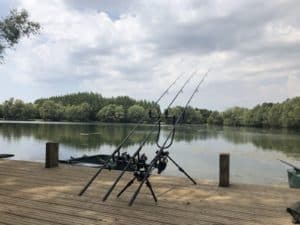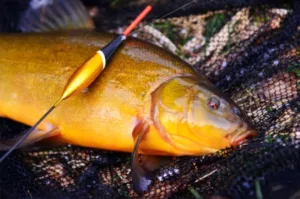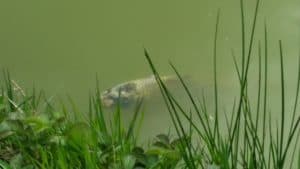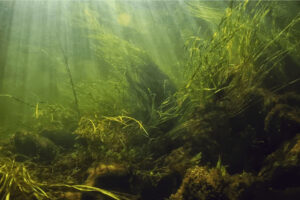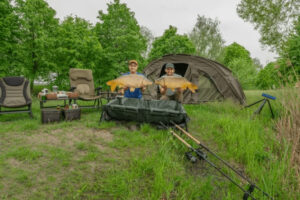Should you Fish with Long or Short Carp Rigs?
Before you start tying a rig, it’s important to consider the various factors that affect its length. There are many different ways to measure the length of your hook link, and it can be very confusing if you don’t know what to expect. If you get the length of your rig right, it will work well, but if it’s not, you might end up missing out on some chances.
The length of a short rig is 4 to 5 inches, while a medium rig is around 8 to 10 inches. Long rigs, on the other hand, are usually longer than 10 inches.
The Type of Rig you use Will Change the Length of the Rig
If I tie a short braided rig with a lead clip, and then I use a different lead for the second rig, there might only be a couple of millimeters difference in the finished length. However, since the leads are different, you won’t get the full effect of the new lead until it’s fully upright. This is very important to consider when it comes to the mechanics of the rig.
The choice of the lead system that you use has a huge impact on the way the hook will go into the mouth of the fish.
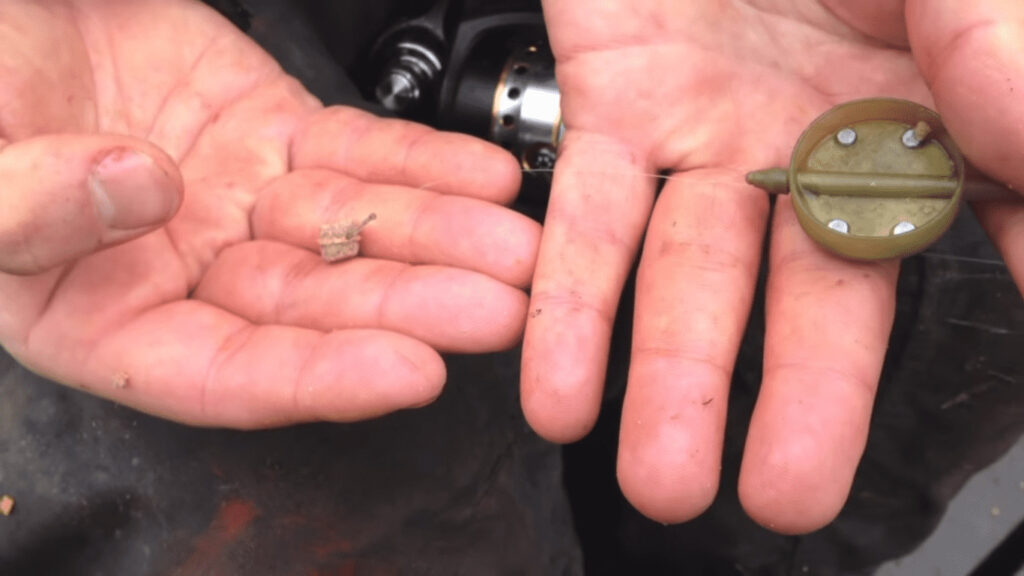
When Should you use Short Carp Rigs?
For me, when creating a short rig that’s 4 to 5 inches long, I usually use braid. Under special circumstances, I might also use a coated material, but not often.
A short braided rig is ideal for solid-PVA bag fishing. I would use it if I knew that the fish were feeding heavily in the silt, and I just wanted to drop a rig on a clear spot with a small amount of bait. It might seem like a strange choice, but having a short rig in the silt works well.
The fish are known to eat the silt, so a supple braided rig will work even if the lead lands heavily into the silt. If you have a small spread of bait around the area, such as a PVA bag or a grubbing mix, this will work well.
A supple short rig would also work well when you’re dropping from a bait boat. It can be used to create a tight pile of bait over the top of the rig.
Another great example of this is spooning rigs out. The fish will not be moving far between food items, and they’ll be moving close to the deck, which means they won’t be picking up individual boilies, they’ll more likely be sucking the bait up in one big gulp.
When Should you use Medium Carp Rigs?
For me, a medium-length rig is between eight and ten inches from the tip of the lead to the eye of the hook. This is the length that I usually use for most of my fishing, and it works well for me when I’m using a combination of different types of bait. I also find that this type of rig works well when I’m fishing over a bed of bait.
When Should you use Long Carp Rigs?
The difference between using a medium length and a long rig is around five centimeters. However, if you hold both of these up side by side, the overall length of the rig will be significantly longer.
Sometimes, I use long rigs in different situations. For instance, when I’m fishing in large reservoirs, I usually use a big heavy lead to allow me to cast a long way. This type of setup works well when I’m just looking for a passing fish and I can pick up the rig and run.
If I have the opportunity to put a spread of bait over this rig, then I would do that, but I’m not talking about using a spod mix. I’m talking about using a big wide spread of bait. This type of setup works well when I’m fishing in an area that’s around 20 meters wide. The fish are moving a lot between the different types of bait that I’m using.
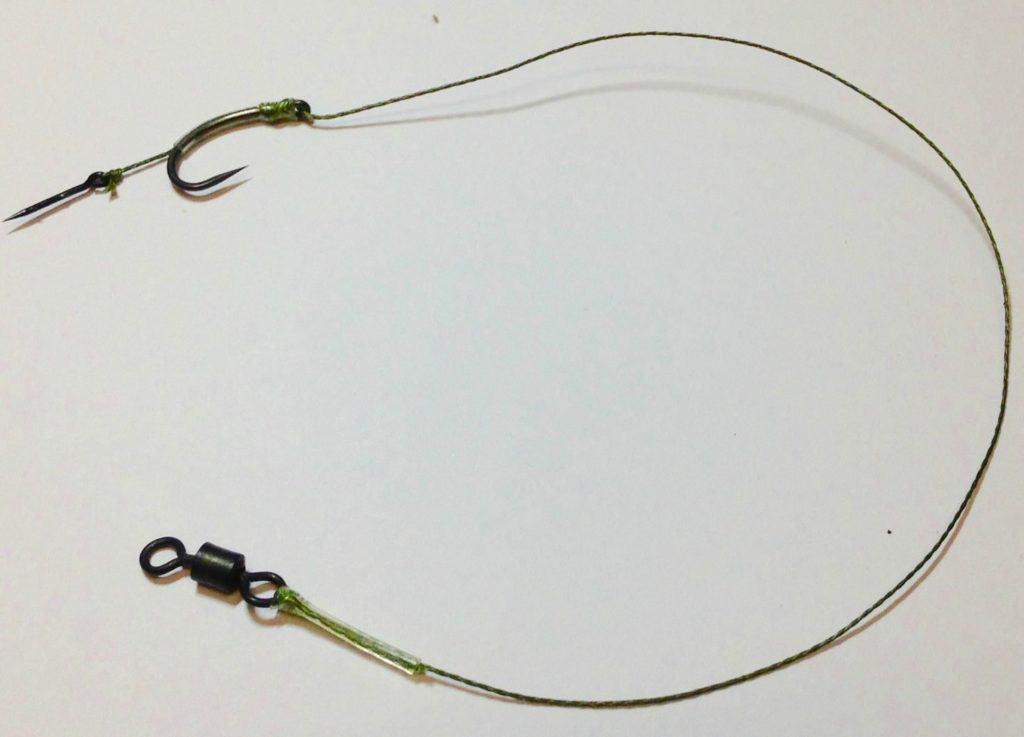
Adjust the Rig According to the Lake Bed
The first thing that you should consider when it comes to choosing a hook link length is the type of lakebed that you’re planning on fishing.
The type of lakebed that you are planning on fishing might have a thick layer of soft silt. If this happens, then a short hook link that’s mounted on a lead clip might get buried in the sediment.
This type of setup can be very effective if the fish are digging the bait out, but it can also be hit-and-miss. Another issue with this setup is that the weight of the lead will eventually settle in the silt.
When it comes to fishing for large fish in pressured areas, this setup can be very effective.
Unfortunately, having your hook bait buried can also increase the time it takes for a fish to find it. This is why most of the time when fishing for large fish, we’ll actively look for areas that are clean.
One of the most effective ways to improve the reaction speed of your rig is by reducing the length of the hooklinks.
Before you start fishing a lake, make sure that you’re certain that it’s suitable for your setup. This process can take a long time and can often create a disturbance.
For short sessions, I would suggest using a combination of a long hooklink and a small lead. This setup will allow you to get the bites that you’re looking for.
Adjust the Rig Dependant on Target Fish Size
The effects of fish sizes and the mechanics of the rig on the bite are also important. Some believe that using a slightly longer rig is advantageous when fishing for large fish.
On the other hand, I think that a well-designed rig is the most important factor when it comes to choosing a hookbait for large fish. One way to create a more effective hook mechanism is by increasing the size of the hook.
One of the other factors that you should consider when it comes to choosing a hooklink length is the shape and size of the fish that you’re targeting. For me, when I used to fish with a short rig, I would often get done by the fish, but I would also have a flurry of short beeps. After a while, I decided to add a couple of inches to my rig’s length.
A deep-bodied mirror fish’s mouth has to go from around 10 to 21 inches high to reach the bottom of the lake and retrieve the bait. If I fish a short braided rig, the fish’s mouth will be tilted down, and it will also move up and down. This is why it’s important to make sure that the rig is not too short. If the fish is getting hit while the mouth is tilted down, they will be more likely to eject the rig.
If you have a tight baiting scenario, then you have a better chance of getting a fish that’s not over a spread of boilies.
If you’re fishing for commons, the body is generally much slimmer, and the mouth tends to be closer to the deck. This means that the fish won’t have to angle down to retrieve the bait. A short braided rig for smaller fish with a slim body will work well, as their mouth will be in a horizontal position when they hit it.
If you’re not getting the results that you’re looking for, then you might need to add a couple of inches to your line. This will allow you to target the better fish.
Rig Length Depends on Feeding and Baiting Strategies
One of the most important factors that I consider when it comes to choosing a hook bait for large fish is the feeding behavior of the fish. In some areas, the fish will regularly roll on a spot and consume the suspended food items that they have been eating. This type of feeding behavior can be very effective when using a long hook link.
Another important factor that I consider when it comes to choosing a hook bait for large fish is the pattern of the fish’s feeding behavior. According to this rule, if you’re fishing over a bed of small pellets or particles, the fish will slowly move their heads while grazing across the surface of the bait.
The reaction speed of a short rig will be more aggressive than that of a long hooklink when it comes to fishing for large fish. Another important factor that you should consider is the accuracy of the bait’s placement.
A spread of bait can also encourage the fish to move around more actively. This can make the use of a longer hook link more feasible.
Tactics for Finding Ideal Hook Link Length
One of the most effective ways to determine the ideal length of a hook link for fishing for large fish is by testing different sizes of the same rig on different rods. If the one that you’re using outperforms the others, then switch the other rods to the one that’s producing the most runs. As a general rule, if the hook is positioned on the lip of the mouth, then the link may be too short.
If the hook is positioned in the middle of the bottom lip or is slightly back in the mouth of the fish, then it’s the right length.
When fishing for large fish using a ledger rig, I usually use a long hooklink to give the fish a better feel of the weight of the lead.
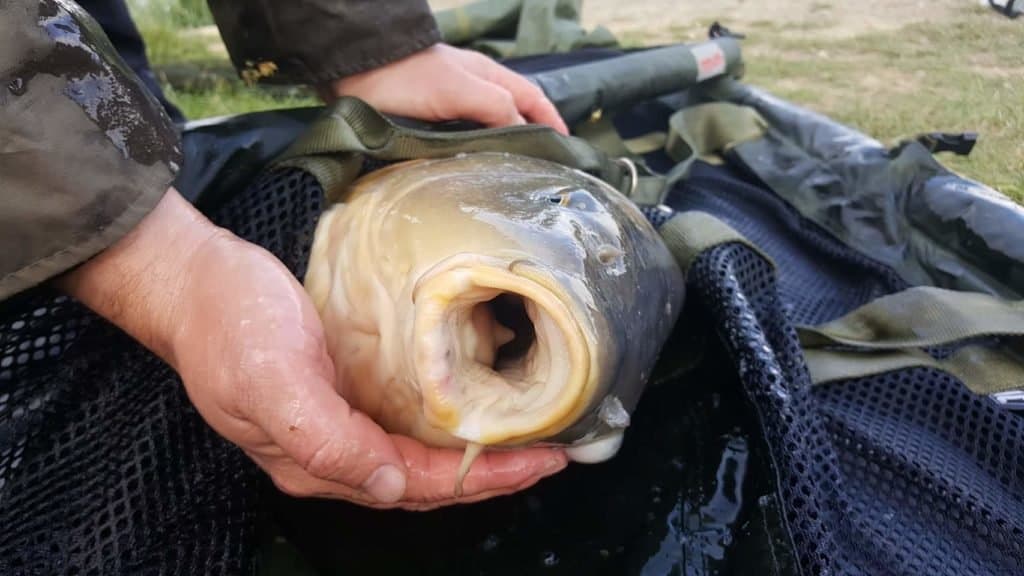
Hook Link Length when Fishing with PVA
When using PVA bags, I will match the length of my hooks to the size of the bags. I don’t want to have a big chunk of hooklink visible if I’m casting a big cast, which could cause a problem.
For me, when it comes to fishing for large fish using a combination of different types of rigs, I will also match the length of my hooks to the length of the PVA stocking that I’ll be using. This method works well during the winter season as the water temperature drops and the melt time of the PVA decreases.
When using mesh stocking, I always use a small metal link that hooks onto my lead. This allows me to clip on a tied mesh stocking while casting.
For most of my fishing, I use a safety-clip system. I always make sure that there are two inches of hooklink before it reaches the top of the mesh. If I’m using a four-inch mesh stocking, I will use a six-inch rig to ensure that the hook will not get tangled in the bottom of the stocking. This method minimizes the chances of getting tangled in the line and makes sure that my bait is placed in the ideal position.
The conditions under the surface can also affect the length of my rigs. If there’s a lot of weed, debris, or heavy silt under the water, I might prefer to use a longer link to keep the rig from getting buried in the cast. If the lakebed is firm and there are no obstructions, I might switch to a shorter link. This can change depending on the situation.
Rig Tying Tips
To make sure that I have the right gear for any situation, I always have a selection of different types of carp rigs that I can use. These will allow me to make up for any type of fishing rig for each circumstance that I might encounter.
I also use a quick link system on my rig that allows me to easily change the direction of my fishing. This method can be used whenever I want to switch to a different type of fishing.
So, How Long Should a Carp Rig Be?
It really depends on the lakebed, the size of the target fish, the baiting scenario, and the type of rig you are using. But ultimately, follow the rules above, and adjust until you are hitting the middle of the bottom lip. Then adjust your other rods to match.
Further Reading
I have made a lot of mistakes during my fishing sessions and don’t want you to make the same mistakes. I’ve learned the hard way over 20 years of fishing most weekends, testing, tweaking, and testing again and now want to help you excel with your carp fishing.
If you need any help, you can reach me at Fishing Again’s Facebook page
Last Updated on February 6, 2024 by Shane

